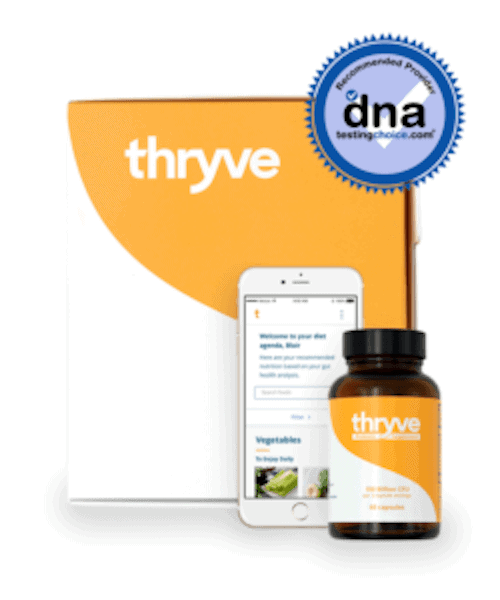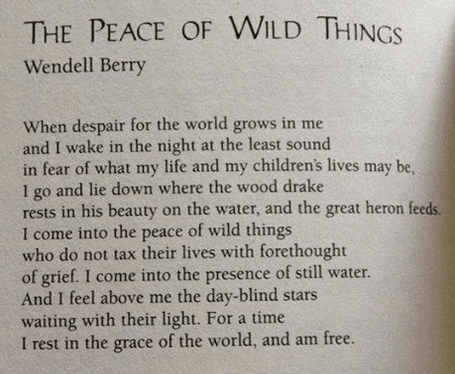Be Productive At Home During The COVID-19 Scare

Staying home during the COVIDS-19 scare can produce anxiety, but why not be productive and make this downtime count. There’s so much that you can do to improve yourself, tackle long-overdue tasks, and chill out with a mindfulness practice.
Check out my Covid Immunity CourseGo here for COVIDS-19 Updates and here for how to boost your immune system.
We all want to be productive to some extent most days of our lives, and hopefully we feel that’s mostly true when we’re working. But these days of at home seclusion during the coronavirus COVID-19, many of us are going stir-crazy from boredom.
Well, there’s really no need for that — if you take 10 minutes to mindfully contemplate it, you can make these days and weeks of sequestration your near once-in-a-lifetime opportunity to, as “they” say, make yourself a better version of yourself.
You have the time. All you need is some inspiration and the energy to act on it.
The aim of this post is to offer some ideas to kick-start your inspiration; you’ll have to muster the energy yourself, although about this I do have a suggestion — implement the buddy system.
If you’re sharing your cave with someone, get him or her to hold you accountable to accomplish whichever of the ideas I’m about to share with you, or to join you in doing them. If you’re sequestered by yourself, as I am, reach out to a friend, tell him/her what you’re up to and to either join you or support your intention.
But before you can successfully get on this productive kick, become mindful for where you’re at presently. If you’re fearful, this must be abated to clear the way for something productive and useful to happen. If you’ve become lazy, you must do the thing you have the least resistance to do, with the intent for it to kickstart something you resist, such as taking a walk to cultivate the energy to exercise more rigorously.
That said, let’s dig into how you can be productive whilst being homebound.
Get Mindful
The first thing to do is to take stock on what state of mind predominates now. If you’re stressed, think about what you could do to de-stress. Stress typically extends from fear. You might be fearing getting sick, losing your job, getting evicted from your home, or any of an never-ending salvo of fearful concerns. Fear, like stress, can be useful if it spurs action; otherwise, it slowly decapitates you.
My favorite anti-fear mantra comes from sci fi writer Frank Herbert’s Dune and Dune Trilogy. In one of the books in the Trilogy there is a litany about fear:
I must not fear. Fear is the mind-killer. Fear is the little-death that brings total obliteration. I will face my fear. I will permit it to pass over me and through me. And when it has gone past I will turn the inner eye to see its path. Where the fear has gone there will be nothing. Only I will remain.
Try to get motivated by fear to productively eliminate what created it, but don’t dwell on this emotion. “Though the coronavirus is something that’s happening right now, our fears about it are often something not happening to us [in the present moment], and mindfulness can help anchor us,” says psychologist Dr. Juli Fraga, who has written about mental health for KQED.
Some resources to help:
- Deconstruct Fear with Action
- To Be Successful, “Manage Your Fear” — Here’s How
- Practice Your Fears With Tim Ferriss
Another topic to be mindful about is why you haven’t been using this downtime to be productive. Perhaps rather than doing some long-overdue projects, you’ve been stuck on coronavirus news. Do less of that. Adjusting to the safety measures required to curb the spread of coronavirus can be stressful, but the list of appropriate measures is rather small. One update a day about COVID-19 is enough. That leaves a lot of time for something more productive. Ask yourself why that hasn’t happened, and try to switch gears.
Get Calm
Here are two of the many techniques to calm the mind.
The 4x4x4 Breath
Members of the military are taught a simple breathing technique where you inhale for four seconds, pause for four seconds, exhale for four seconds and pause again for four seconds. This can slow the heart rate and mitigate your body’s anxiety response.
Meditate with Brain Entrainment
The positive affirmations in guided meditations can also redirect your mood. Free apps like Insight Timer provide guided meditations tailored to specific themes, and some are as short as two minutes for those of you who start squirming after a few minutes of trying to be still.
There’s also brain entrainment. This has not been fully vetted by double blind scientific studies, but according to Wikipedia:
Brainwave entrainment, also referred to as brainwave synchronization and neural entrainment, refers to the hypothesized capacity of the brain to naturally synchronize its brainwave frequencies with the rhythm of periodic external stimuli, most commonly auditory, visual, or tactile.
I can tell what my brain is doing when I listen to the brain wave frequencies that are hypothesized to synchronize them, but I can tell that it rapidly deepens my meditation experience.
If this is something you want to try, grab a pair of headphones, go to Youtube and search for either “isochronic tones” or “binaural beats” and select the soundtrack most pleasant to you.
Here’s an example:
Some resources to help:
- How You Can Control Your Brainwave Frequencies, The Keys To Happiness
- Meditate Like A Monk In 20 Minutes
- Why Holosync Technology Will Quickly Give You These 10 Benefits of Meditation and More! (Listen)
- How Meditation Posture and Intention Manifest Your Goals
Get Moving
Under the “shelter in place” policy now underway in many U.S. cities and some countries, gyms are closed; probably a good thing, as you don’t want to be lingering in an enclosed space where people are sweating and breathing heavily in your face.
If you’re not sick or experiencing respiratory symptoms, take walks, runs, hikes or bike rides outside while maintaining a distance of at least six feet between yourself and others.
Once again, take advantage of YouTube as a free resource to help you be productive. It has thousands of videos of yoga, pilates, strength training and HIIT (high intensity interval training) classes to help boost your mood, improve posture and connect with yourself.
In addition to keeping you healthy, regular exercise can help keep you sane. Exercise produces endorphins — chemicals in the brain that act as natural painkillers — and also improves the ability to sleep, which in turn reduces stress.
One thing I’m doing that’s actually kind of fun is to set my phone to chime every hour. When it does, I stop what I’m doing and do some vigorous exercise for two minutes. It could be squats, burpees, jogging up and down the stairs, or pull-ups (combined with some other movement, because I certainly can’t do a set of pull-ups for two minutes). You’ll be surprised at the cumulative effect of doing just two minutes of exercise per hour, if you do it for several hours.
Some resources to help:
- Why You Must Exercise for Longevity and How To Do It
- 7 Life-saving Reasons Exercise Is The Ultimate Anti-aging Pill
- How To Age Better, Beat Cancer and Diabetes With Exercise
- 3 Expert-approved Anti-aging Exercise Routines You Can Do and Why You Should Bother
- The website DoYogaWithMe has free classes for many different kinds of yoga styles
- Youtube sensation and exercise physiologist Jeff Cavelliere has posted a free no-equipment, home exercise program:
Get Healthy
Sure, the suggestions above in “Get Moving” promote health, but here I’m focusing on assessment. Read on and you’ll see what I mean.
Somewhere, perhaps collecting dust in a desk drawer, are lab test results for various health metrics, such as blood sugar, cholesterol and chronic inflammation. If you were in the “Reference Range”, perhaps you felt that it’s good enough, but what about the optimal range? Now that you have some time, take a look at those lab results and use Google to search for optimum test numbers.
As long as you’re at it, consider getting your personal genomics tested by 23andMe and your microbiome evaluated by Thryve. Both of these services send you a kit that you use to take the required samples at home, so you don’t have to go anywhere. And the insights you will gain about your health may be valuable.
Finally, you can test for some things all on your own. For instance:
- The Waist-to-Height Test measures the ratio of your waist circumference to your height, and is a far better determinant of health, and perhaps lifespan, than BMI (Body Mass Index). So, grab a tape measure and measure your height and waist circumference just below the belly button. Your waist measurement should be no more than half the length of your height.
- The Pulse Rate Test measures your resting heart rate. People with resting pulses of 80 beats per minute die four to five years earlier than those with pulses of 65 beats per minute. That’s the conclusion of a Danish study that after controlling for physical fitness and other health and behavioral factors, found that the higher the resting heart rate, the greater the risk for death.
- The Sitting-Rising Test will give you feedback on your muscular strength, flexibility, balance and motor coordination. All of these attributes are essential for day-to-day living, and for maintaining your independence as you age.
You may read more about these three tests in my article, Three Ways You Can Predict Your Lifespan 10 Minutes.
Of course, there are even more at-home tests you can explore, such as walking speed, heart recovery, reaction time, word use and more. Here’s one example from Predict Your Lifespan By These 12 Tests:
The Grip Strength Test may predict heart attack and strokes per the results of a study of 139,691 adults aged 35 to 70, which showed that every 5 kg (11 pounds) of declining grip strength was associated with a 16% increase in death from any cause, a 17% greater risk of cardiovascular death, and a 17% higher risk of non-cardiovascular mortality.
Get Unstuffed
I’m not referring to getting rid of an extra heavy meal, but to get rid of old stuff you no longer use or want — clean those closets!
Few things can give you as reliable a good feeling of being productive as does relieving yourself of clutter and closet junk. What’s more, especially now, others may be able to use your unwanted things.
Get rid of the excess in our closets, drawers and garage and give it to someone who can use it.
Get Sports
Yes, I know that there are no sports being played during this COVID-19 scare, but there are plenty to watch on YouTube. Do you remember a game from the past that jump up and pump your fist? That’s a good feeling. Go find that game and relive that moment. I just did with a game from 2016 between the Warriors and the Thunder. I thoroughly enjoyed watching Step Curry drain 3s from way beyond “the arc”.
Tap Your Creative Juices
Now is a good time to explore whatever creative urges you didn’t have the time to explore, such as poetry, drawing, painting or short story writing.
Been meaning to catch up with a long, lost friend? How about writing this person a hand-written letter and snail mail it?
Nick Virgilio wrote one of my favorite haiku’s:
Lily:
out of the water
out of itself
I go to this poem by Wendell Berry when I need perspective:
Listen To Old Songs
Kenny Rogers died yesterday. After I read his obituary, I checked out some of the old songs that built his fame. He had done several duets with Dolly Parton. Listening to them made me happy.
Click her to listen to their most famous duet, You Can't Make Old Friends.
Listening to songs of our youth is a wonderful way to spirit you away from your current concerns, so consider spending some time moving to the music, or getting moved by it.
Read A Book
How often have you said that you wish you had more time to read? Well, now you do.
Audible is making hundreds of titles available for free during the coronavirus pandemic.
The audiobook platform has said that, for as long as schools are closed, anyone can listen to a vast selection of its titles. This means books read by Westworld’s Thandie Newton and Downton Abbey’s Dan Stevens are available to stream at no cost at all.
Visit stories.audible.com from any web browser to get started. No log-ins, credit card or passwords needed.
Take A Bath
Sure, you can be productive by taking a bath if it provides some solace during these trying times. And what could be more calming and simple to do?
Do this before you’re ready to go to sleep. Extra credit: put a few drops of lavender oil in the bath.
Your “Be Productive” Takeaway
You’re in control about how you’re going to experience all this downtime during the coronavirus COVID-19 scare. Don’t squander these precious days. This is the time to dabble in all those many things you said you had no time to do. Choose what you’re the least resistant to doing and wade into the water. It’s likely warm and comforting.
Last Updated on February 28, 2022 by Joe Garma







